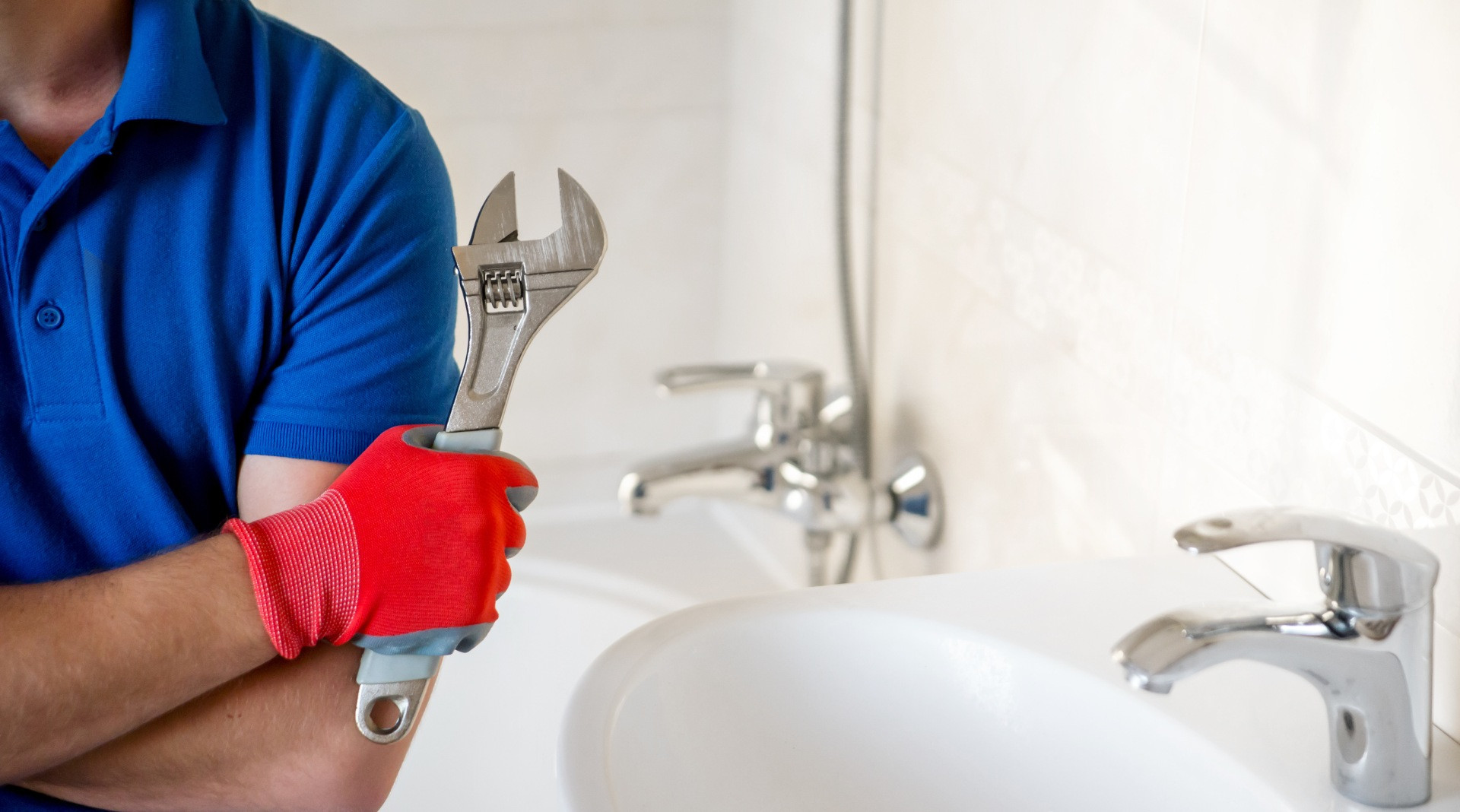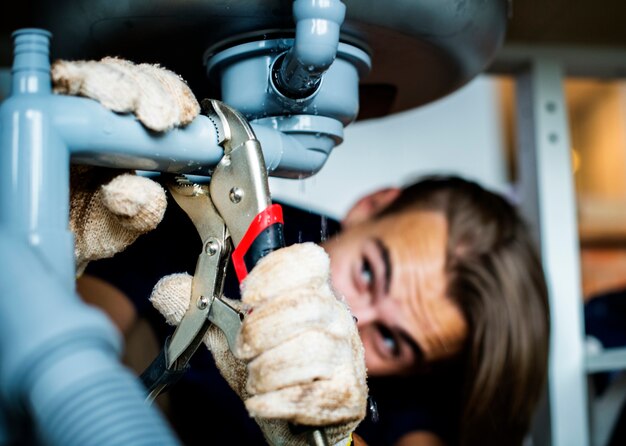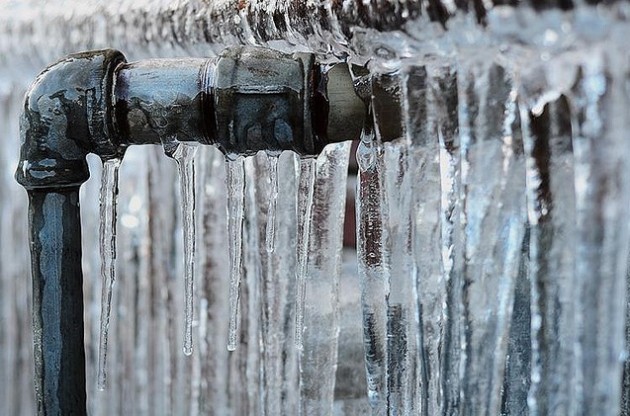
Winter Home Maintenance: What To Do If Your Pipes Freeze
As the winter chill sets in, it cosily invites us to light up the fireplace and savour a steaming cup of cocoa.
However, tucked away from these warm moments are potential silent adversaries within our homes: the water pipes. Frigid temperatures can turn them into icy cylinders ready to burst at the seams.
If you’re a homeowner, knowing what to do when you notice a frozen pipe is a crucial aspect of winter home maintenance.
So, let’s explore your home maintenance options so you know how to effectively prevent or deal with the issue of your pipes potentially freezing during the colder months of the year.
Table of Contents
How To Identify Whether Your Pipes Are Frozen
Imagine waking up on a frosty morning, turning the tap for your morning rituals, and finding only a trickle greeting you. This is often the first sign that Jack Frost has paid a visit to your plumbing.
From the conspicuously exposed pipes to the hidden ones in basements or crawl spaces, no part is safe from the cold’s embrace, for when water freezes, it expands, putting immense pressure on your plumbing system.
Prevention is definitely the best option, but sometimes even your best efforts can clog the pipes. Recognising the signs of a frozen pipe early can help you take action before a minor problem becomes catastrophic.
Here are some common indications that your pipes could freeze:
- Decreased flow rate. If you turn on the faucet and only one drop of water comes out, it could be a sign of a frozen pipe. The flow rate decreases because the ice in the pipe blocks the flow.
- Strange odours. If you notice unusual smells coming from your faucets or drains, it could be due to clogged frozen pipes. This obstruction can cause backups and unpleasant odours.
- Ice on visible pipes. If you have exposed pipes in tight areas such as basements or crawl spaces, check for accumulation of snow or ice. This clearly indicates that the machine is frozen.
- Strange noises. An unusual or buzzing sound in your plumbing system could be a sign of trapped air caused by frozen pipes.
First Response – What Must You Immediately Do?
Once you’ve identified a frozen pipe, the clock starts ticking. Taking swift action can prevent a minor inconvenience from becoming a full-blown crisis.
Here are the immediate actions you must take in that case:
- Shut off the Main Water Line. Before you begin, ensure you know where the main water shut-off is located. This is your emergency stop button if things go south.
- Open the Faucet. Turn on the faucet supplied by the frozen pipe. This action relieves pressure and provides an escape route for water once the thawing begins.
- Apply Heat. Begin to gently warm the frozen section if it’s exposed. Use a hairdryer or heating pad, moving from the faucet toward the frozen area. It’s like a cautious dance between heat and ice.
These are the three most important things you can do when damaging that plumbing system before the problem gets worse. Remember that speed is key here, so the sooner you act, the better your chances of avoiding headaches.
Insulation & Preventative Measures
Your home is your castle, and protecting it doesn’t require a moat but rather some savvy prep work. As the winter months roll in, consider adding extra insulation to attics, basements, and crawl spaces — these are the areas most susceptible to the cold.
After all, prevention is better than a cure.
Insulate water pipes to shield them better from the cold’s grasp. Foam insulation sleeves are like armour for your pipes, and for the more vulnerable sections, electrical heating tape is a warm embrace against the chill.
Let faucets drip slightly during cold snaps — movement is your ally against the freeze. Set your thermostat to a steady temperature, and don’t forget to open cabinet doors to let warm air circulate.
Your arsenal against the cold should include tools like heat lamps, space heaters, and even towels soaked in hot water — each a trusty tool in your endeavour.
Sometimes, the old ways hold wisdom. Running a trickle of water to keep the pipes from freezing is a practice as old as time.
Once the immediate threat of the cold has passed, your vigilance must not wane. Monitor the previously affected pipes, as cracks may not always be visible but can cause significant damage over time. Regular checks and maintenance are the rhythm to which a well-kept home dances.
When to Call Professional Plumbers?
When you face a foe you can’t defeat alone, it’s time to summon the healers of your home — the plumbers. With their specialised skills, they can navigate the labyrinth of your home’s plumbing, safely thaw pipes, and repair any damage inflicted by the winter’s chill.
So, when in doubt, especially if the pipe is concealed or if any damage is visible, calling in professional plumbers is your best move. They bring a trove of expertise and pro tools to delicately handle and rectify the situation.
Not only that, but an expert plumber can help you fortify your home against the cold in the winter. They’ll inspect the entire property, show you the most vulnerable areas, and offer recommendations to prevent your pipes from freezing.
Just make sure you call in a licensed local plumber–this ensures you receive the best kind of help to resolve your plumbing problem.
Conclusion
Taking care of your plumbing system during the colder months of the year is a non-negotiable task. Knowing a skilled plumber and understanding the signs of frozen pipes can save you from costly repairs and water damage.
However, maintaining your home in the winter, particularly protecting your pipes, doesn’t have to be hard. Applying the advice from above will surely save you tons of headaches and ensure you have peace of mind during the colder months.
Remember, a well-maintained plumbing system is the key to a warm and hassle-free holiday season, so always welcome winter well-prepared in advance.



